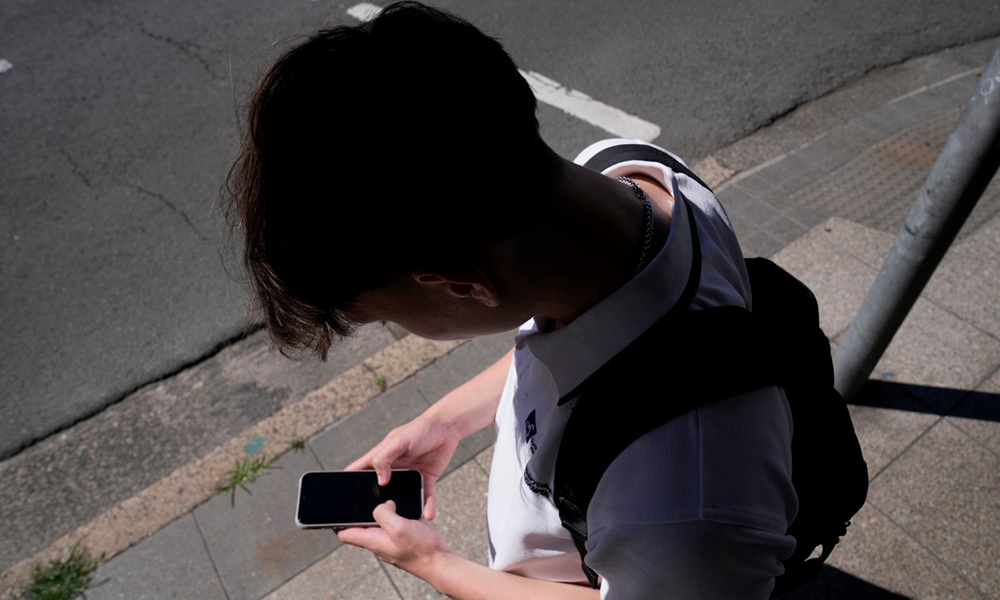Science & Technology
Apple set for big sales decline as investors await AI in iPhones

Apple’s (AAPL.O), opens new tab plan to add generative AI to its iPhones and revive sagging sales in the crucial Chinese market will be in focus on Thursday, when the tech giant is expected to report its biggest quarterly revenue decline in more than a year, Reuters reported.
Long considered a must-own stock on Wall Street, Apple shares have underperformed other Big Tech companies in recent months, falling more than 10% this year as fears mount about its slow roll-out of artificial intelligence services and as a resurgent Huawei (HWT.UL) takes market share in China.
Analysts on average see iPhone sales, which account for about half of Apple’s revenue, falling 10.4% in the first three months of 2024, according to LSEG. That drop would be the steepest in more than three years.
The year-ago iPhone revenue that the 10.4% iPhone sales drop is measured against was unusually high as Apple satisfied pent-up demand after the COVID pandemic, company executives previously noted.
At least $5 billion of the $51.3 billion in iPhone sales a year ago was essentially catching up from disruptions in the December 2022 quarter when COVID lockdowns in China hampered iPhone production, executives said.
Even with that factored in, Wall Street expects a slight decline in iPhone sales, and analysts estimate Apple’s total revenue declined 5% in its fiscal second quarter ended in March. That would be Apple’s biggest revenue decline since the December 2022 quarter, when revenue fell 5.5%, read the report.
Apple earlier this year lost the crown of the world’s most valuable company to Microsoft (MSFT.O), opens new tab. Its market value stands at $2.68 trillion after the share price declined 11.24% so far this year.
Weak revenue and falling shares have pressured Apple to spruce up its flagship device after years without major upgrades.
The company is in talks with OpenAI and Alphabet-owned Google to add genAI features for the iPhone that could be unveiled at what is expected to be its biggest-ever annual developer conference in June, Bloomberg News has reported.
According to Reuters analysts believe such an AI integration could drive demand for the next iPhone series, expected to be announced in the fall.
While executives at Microsoft, Alphabet (GOOGL.O), opens new tab, Meta Platforms (META.O), opens new tab and other major technology firms have talked up their AI strategies on quarterly conference calls in recent months, Apple CEO Tim Cook has discussed his plans for the emerging technology much less.
Adding AI features to iPhones could also help Apple to compete better with Huawei and Samsung Electronics (005930.KS), opens new tab, which reclaimed the title of the world’s top smartphone vendor from Apple this year, driven by demand for the AI features in its Galaxy S24 smartphones.
“Replacement cycle tailwinds and incremental generative AI features set up Apple well for a strong iPhone 16 cycle,” Bernstein analyst Toni Sacconaghi said this week as he upgraded the company’s shares to “outperform” from “market-perform.”
“We believe prevailing weakness in China is more cyclical than structural, and note historically Apple’s China business has exhibited much higher volatility than Apple overall, given its very feature-sensitive installed base.”
Thursday’s earnings will also be watched closely for updates on the company’s stock buyback plan and the Vision Pro, Apple’s first major product in years that hit the shelves in February.
After initial enthusiasm, there have been signs that demand slowed for the $3,500 device, with an analyst saying this month that Apple has pulled back its production estimates for the mixed-reality headset.
The rest of the company’s hardware business is also reeling from soft demand, with iPads and Mac sales expected to fall 11.4% and 4.3%, respectively, in the March quarter, Reuters reported.
Apple has signaled it is sharpening its focus on the devices, which have also been hobbled by a lack of major upgrades.
At an Apple event this month, a revamped iPad line-up is expected to be unveiled and media reports have said that it plans to update every Mac model with faster, AI-focused M4 processors.
The services business, which includes App Store and subscription services such as Apple TV, is expected to remain a bright spot with revenue growth of 7.7%.
Apple shares closed down 0.6% at $169.30 on Wednesday.
Science & Technology
Australia social media ban set to take effect, sparking a global crackdown
For the social media businesses, the implementation marks a new era of structural stagnation as user numbers flatline and time spent on platforms shrinks, studies show.

Australia is set to become the first country to implement a minimum age for social media use on Wednesday, with platforms like Instagram, TikTok and YouTube forced to block more than a million accounts, marking the beginning of an expected global wave of regulation.
From midnight, 10 of the biggest platforms will be required to block Australians aged under 16 or be fined up to A$49.5 million ($33 million), Reuters reported.
The law received harsh criticism from major technology companies and free speech advocates, but was praised by parents and child advocates.
The rollout closes out a year of speculation about whether a country can block children from using technology that is built into modern life. And it begins a live experiment that will be studied globally by lawmakers who want to intervene directly because they are frustrated by what they say is a tech industry that has been too slow to implement effective harm-minimisation efforts.
Governments from Denmark to Malaysia – and even some states in the U.S., where platforms are rolling back trust and safety features – say they plan similar steps, four years after a leak of internal Meta (META.O) documents showed the company knew its products contributed to body image problems and suicidal thoughts among teenagers while publicly denying the link existed.
“While Australia is the first to adopt such restrictions, it is unlikely to be the last,” said Tama Leaver, a professor of internet studies at Curtin University.
“Governments around the world are watching how the power of Big Tech was successfully taken on. The social media ban in Australia … is very much the canary in the coal mine.”
A spokesperson for the British government, which in July began forcing websites hosting pornographic content to block under-18 users, said it was “closely monitoring Australia’s approach to age restrictions.”
“When it comes to children’s safety, nothing is off the table,” they added.
Few will scrutinise the impact as closely as the Australians. The eSafety Commissioner, an Australian regulator tasked with enforcing the ban, hired Stanford University and 11 academics to analyse data on thousands of young Australians covered by the ban for at least two years.
Though the ban covers 10 platforms initially, including Alphabet’s (GOOGL.O), YouTube, Meta’s Instagram and TikTok, the government has said the list will change as new products appear and young users switch to alternatives.
Of the initial 10, all but Elon Musk’s X have said they will comply using age inference – guessing a person’s age from their online activity – or age estimation, which is usually based on a selfie. They might also check with uploaded identification documents or linked bank account details.
Musk has said the ban “seems like a backdoor way to control access to the internet by all Australians” and most platforms have complained that it violates people’s right to free speech.
For the social media businesses, the implementation marks a new era of structural stagnation as user numbers flatline and time spent on platforms shrinks, studies show.
Platforms say they don’t make much money showing advertisements to under-16s, but they add that the ban interrupts a pipeline of future users. Just before the ban took effect, 86% of Australians aged 8 to 15 used social media, the government said.
“The days of social media being seen as a platform for unbridled self-expression, I think, are coming to an end,” said Terry Flew, the co-director of University of Sydney’s Centre for AI, Trust and Governance.
Platforms responded to negative headlines and regulatory threats with measures like a minimum age of 13 and extra privacy features for teenagers, but “if that had been the structure of social media in the boom period, I don’t think we’d be having this debate,” he added.
Science & Technology
Ethiopian volcano erupts for first time in nearly 12,000 years
Ash from the eruption drifted across the region, spreading over Yemen, Oman, India, and parts of Pakistan.

The Hayli Gubbi volcano in Ethiopia’s Afar region has erupted for the first time in almost 12,000 years, sending massive ash plumes soaring up to 14 kilometres into the atmosphere, according to the Toulouse Volcanic Ash Advisory Centre.
The eruption began on Sunday and lasted several hours. Hayli Gubbi, located around 800 kilometres northeast of Addis Ababa near the Eritrean border, sits within the geologically active Rift Valley, where two major tectonic plates meet. The volcano rises roughly 500 metres above the surrounding landscape.
Ash from the eruption drifted across the region, spreading over Yemen, Oman, India, and parts of Pakistan. Satellite imagery and social-media videos captured a towering column of white smoke billowing into the sky.
The Smithsonian Institution’s Global Volcanism Program notes that Hayli Gubbi has no recorded eruptions during the Holocene, the period dating back about 12,000 years to the end of the last Ice Age.
Volcanologist Simon Carn of Michigan Technological University also confirmed on Bluesky that the volcano had “no record of Holocene eruptions.”
Science & Technology
Cloudflare outage easing after millions of internet users affected

A global outage at web-infrastructure firm Cloudflare began to ease on Tuesday afternoon after preventing people from accessing major internet platforms, including X and ChatGPT.
Cloudflare, whose network handles around a fifth of web traffic, said it started to investigate the internal service degradation around 6:40 a.m. ET. It has deployed a fix but some customers might still be impacted as it recovers service.
The incident marked the latest hit to major online services. An outage of Amazon’s cloud service last month caused global turmoil as thousands of popular websites and apps, including Snapchat, were inaccessible due to the disruption.
Cloudflare – whose shares were down about 5% in premarket trading – runs one of the world’s largest networks that helps websites and apps load faster and stay online by protecting them from traffic surges and cyberattacks.
The latest outage prevented users from accessing platforms such as Canva, X, and ChatGPT, prompting users to log outage reports with Downdetector.
Downdetector tracks outages by collating status reports from a number of sources. “We saw a spike in unusual traffic to one of Cloudflare’s services beginning at 11:20 UTC. That caused some traffic passing through Cloudflare’s network to experience errors,” the company said in an emailed statement.
“We are all hands on deck to make sure all traffic is served without errors.”
X and ChatGPT-creator OpenAI did not immediately respond to requests for comment. – REUTERS
-

 Latest News2 days ago
Latest News2 days agoMuttaqi: Afghanistan’s progress requires both religious and modern education
-

 Sport4 days ago
Sport4 days agoILT20: Desert Vipers edge Gulf Giants in historic super over thriller
-

 Regional4 days ago
Regional4 days agoSix Pakistani soldiers killed in TTP attack in Kurram District
-

 Business4 days ago
Business4 days agoTrade bodies warn almost 11,000 Afghan transit containers stuck at Karachi port
-

 World4 days ago
World4 days agoPowerful 7.6 earthquake hits northern Japan, tsunami warnings issued
-

 Latest News3 days ago
Latest News3 days agoTrump calls Afghanistan a ‘hellhole’ country as US expands immigration restrictions
-

 Sport5 days ago
Sport5 days agoSorkh Poshan Khafi defeats Sarsabz Yashlar 4-0 in Afghanistan Champions League
-

 Sport3 days ago
Sport3 days agoCommanding wins for Arman FC and Sarsabz Yashlar in Afghanistan Champions League
























